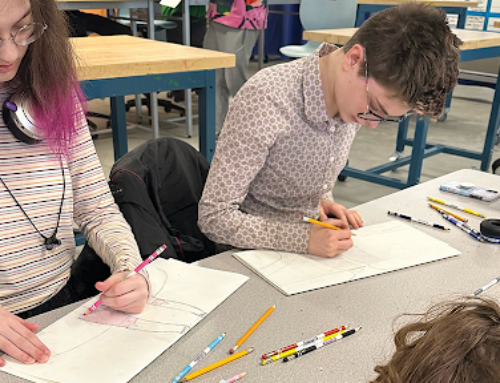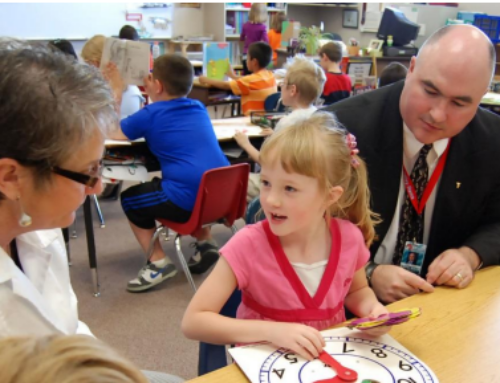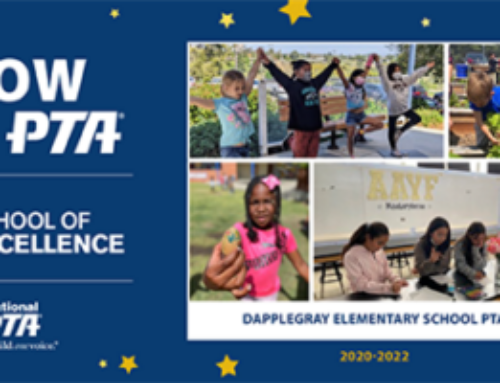When New York’s Rochester City School District (RCSD) first approached the University of Rochester (UR) to partner and “turn around” East High in 2014, leaders at the university reluctantly declined. They knew that the complexity and intransigency of schools can make it difficult to do anything more than tinker around the edges (Tyack & Cuban, 1995), and it was not clear that East’ community was interested in working with UR to make the transformative change that was needed, given the dysfunction at East at the time. Still, faculty at UR’s Warner School of Education and Human Development knew this was exactly the opportunity they claimed to believe in, so after some thoughtful conversation, leaders at both the university and the Warner School reconsidered, and the partnership was formed.
The district’s oldest, largest school, East at the time, served grades 7-12, with students organized into a lower school (grades 7-8) and an upper school (9-12). Within its student body, 54% of scholars identify as Black, 34% Latinx, 8% white, 3% Asian, and 1% multiracial, and 86% qualify as economically disadvantaged. At the time the partnership began, only 33% of East’s seniors graduated on time, the dropout rate was 41%, there were 2,468 annual suspensions, and attendance was 77%. The predominant belief among community and staff was that East was unfixable, and this belief showed in how the school was run. Hallways were filled with youth during class time, there was no consistency in curriculum and lesson planning, leaders were ineffective, and deficit-focused beliefs about students prevailed. East operated like a place that had been neglected. By many measures, it had.
The city of Rochester is one of the most economically challenged urban centers in the United States. Burdened by persistent poverty and economic turmoil, RCSD had a history of multiple and conflicting initiatives ending in failure. Reading programs, behavior plans, and new and expensive curricula had all come and gone without adequate funding, buy-in from staff, or professional learning to support success. RCSD also had a pattern of unstable leadership, with each superintendent bringing a new agenda that was subsequently abandoned when they resigned. Amid such churn, research-supported practices have little chance to make a difference (Finnigan et al., 2021). Some of the abandoned projects in the district had involved UR, leaving both district and university partners fearful that this turnaround project would be yet another failed initiative.
Such failed partnerships are common (Noguera & Wells, 2011). And invariably, the school community suffers more from the breakup than the university does. Schools entering partnerships are, like East, typically in low-performing districts, populated by historically marginalized groups, and face limited options for improvement and numerous barriers (Valant & Lincove, 2018). This vulnerability, along with the history of failed partnerships, helps explain why communities often regard a university’s motivations warily (Phelps, 2019).
In Rochester, little trust had developed within the community for the university located within the district’s borders (Larson & Moses, 2018). The community perceived a pattern in which UR researchers came to a city school, collected data that they could use to benefit their careers, and then left without addressing community issues. A perception predominated among East staff that UR people “only know theory” and presumed to know what the community needed without bothering to listen (Larson, 2020). Yet the situation at East was dire and some outside help was needed. Because East was “persistently struggling,” a designation given to the bottom 5% of New York state’s schools on student performance measures, the state had determined that the school must restructure or close. To stay open, the restructuring would have to improve the school’s graduation rate, attendance, and state test scores as indicated by the state’s demonstrable indicators. District leaders began to wonder if UR would be East’s best hope. It was, at least, worth a try.
When approaching UR, the Rochester City School Board proposed taking advantage of a new reform option called receivership (formerly called the “out of time” model), which enabled a school district, state, and third entity (such as a university) to function jointly as an educational partnership organization (EPO) to prevent school closure. The EPO, in essence, would operate as a district within the district with its own superintendent and central office oversight. Because the EPO would have control of such items as the budget, staffing, disciplinary policies, curriculum, daily schedule, and school calendar, there would be no disconnect between those who develop plans and those expected to implement them.
The State Education Department’s commitment to the EPO ensured that the work would not follow electoral cycles nor be beholden to the agenda of a superintendent. The state allocated $7.4 million during the EPO’s first three years — the duration of the EPO’s initial commitment. As that three-year commitment neared its conclusion, the state granted extensions twice, once in 2018 and once in 2020, with the current agreement set to expire in 2025. Per state guidance, nearly half of the funding was allocated to the building’s neglected infrastructure. These funds were used for a variety of refurbishments, including repairs to broken water fountains and the heating and air conditioning system; installation of better lighting and security cameras inside and outside the buildings; and improvements to the auditorium, gym, art rooms, and cafeteria. The art and décor were updated to reflect students’ cultures; and a dental suite, barbershop, and professional development/community space were added. The other half of the funding went to professional learning, curriculum writing, student leadership development, and community school initiatives. The EPO designed a dual role for the school’s superintendent, in which they would be both a district leader and a university faculty member. This boundary-spanning (Farrell et al., 2022) position represents a crucial connection point between UR and East and ensured that the superintendent would be accountable to both partners.
There were very few partnership examples to follow. East was a nonselective public school and not a charter school, which universities more typically choose as partners. EPOs were new when we began our work in 2015, and their potential unproven. We — two education researchers from the university, the superintendent of East, and the dean of the UR’s Warner School of Education and Human Development — represent key partners in this university-school collaboration. The partners created a model that brought to the foreground the voices of the East community as experts, and those of us at the university committed to a “practice of humility” (Larson & Nelms, 2022) to disrupt the power hierarchies that plagued past partnerships.
Our leadership team of Warner School faculty and East staff created six committees, each one corresponding with one of the tenets of the New York State Education Department’s Diagnostic Tool for School and District Effectiveness: systems and organization, school leadership, curriculum, instruction, social-emotional learning, and parent and community engagement. Because these six committees were insufficient to address all the elements necessary to make comprehensive improvements, we added committees focused on student life, professional learning, literacy, science education, math education, English education, special education, English as a new language, instructional technology, and business operations. Committees were responsible for writing and implementing their corresponding section of the EPO plan.
Committees met with more than 2,000 community members (1,200 East students, parents, teachers, Rochester’s mayor, labor unions, community agencies, neighborhood groups, and former students who never graduated) to gather and analyze data on what led to East becoming the lowest performing school in the district, as well as to develop a robust vision for a reshaped school. We did not adopt a model created in a different district, school, or country; we responded to what this school community told us it needed. We learned from the community first and then built a reform model.
We discovered that the East community wanted two things, 1) to keep their school open, and 2) for every aspect of school life to change (Larson & Nelms, 2021). The community members’ concerns were no surprise, but we were surprised at the depth and breadth of dysfunction. So, instead of following traditional wisdom to adopt a gradual, incremental change model (Elmore & Juli, 2007), we endeavored to change everything at once. To do so, we had to acknowledge the mix of in-school and out-of-school factors that intersect to undermine equity-focused reform (Bishop & Noguera, 2019). At East, these include Rochester’s high rates of poverty, especially child poverty, which influences and is influenced by other factors, such as high unemployment, racism, segregation, divestment in education, violence and death, housing and food insecurity, over-policing and incarceration, and bad health outcomes. Recognizing that these realities had profound effects on the school and its students, we moved forward with a comprehensive reform model that attempted to respond to the social, economic, and academic factors at play. Our plan had four overarching goals: 1) rebuild structures, 2) reshape culture, 3) restructure leadership, and 4) overhaul curricula and instruction.
After decades of systemic neglect, East lacked adequate building and grounds maintenance, technology infrastructure, and systems for monitoring overtime and payroll. We hired new staff to focus on preventative maintenance, gave a teacher release time to address technology needs, and created a chief financial officer position to ensure we were meeting our fiscal responsibilities. As demanded by the community and supported by state funding earmarked for operations and infrastructure, we planned to alter and rebuild decision-making processes and funds allocation. To do so, we adopted a community schools model, which centers students, families, and the community in all facets of school operations. The school would now be accountable to the community it served. Because we had uncovered community priorities and visions through the committee process described above, we were able to quickly turn toward the best ways to execute the plan.
The EPO statute gave East operational autonomy; therefore, we were able to manage our own budget and create an open process for hiring/rehiring every position, which we believed essential to a comprehensive staff commitment to the new school model. We formed 10 hiring committees, one for each department, made up of existing East faculty and staff (50% union representatives), university faculty, parents, and scholars. All applicants were required to read the EPO plan and agree to the path forward, which included extensive professional learning, a longer school day, and daily collaborative planning time. Applicants also had to agree to be observed by interview committees. The longer school day required additional compensation, which we negotiated with labor unions — a crucial piece of our transformation.
To make the transformation work, we needed to expand the staff. We added 17 teacher leaders (teachers partially released from teaching to support curricular initiatives); a chief financial officer/human resources manager, seven social workers, three school counselors, approximately 10 literacy teachers, a freshman academy director, a school-based administrator for special education, a technology integration specialist, a workforce development liaison, a driver’s education instructor, and a community schools coordinator. All East teachers were required to reapply if they wished to remain at the school; approximately 20% chose not to. The EPO would have been their fourth or fifth turnaround experience, and they were understandably fatigued and dubious. After the interviews and observations, each committee made hiring recommendations to leadership, who followed all recommendations. The majority of existing staff who applied to stay were rehired. In total, 60% of existing staff were rehired, and these staff members made up about 40% of the newly expanded staff. Another 40% came from other RCSD schools and 20% from charters and other districts.
During our listening process, we learned that East students felt unsafe and poorly treated at school, and parents felt unwelcome. Students actively rebelled against what they perceived as an authoritative and punitive system that cared little for their well-being. Many didn’t come to school, as evidenced by a 77% attendance rate. A deficit view (Gorski, 2008) — which treated students and their families as sources of problems, rather than assets to learning — predominated. A radical culture change was necessary to restore, establish, and maintain relationships throughout the community.
To transform the culture, we turned to restorative practices, which emphasize relationship-building and repair over punishment and control (Marsh, 2017). Through activities such as circling, participants learn to speak and listen to each other in ways that work well for both building relationships and repairing relationships when conflicts arise. Our expanded counseling and social work departments were heavily involved in leading implementation of these practices, but the transition required a buy-in from the whole school, along with the support of leaders and community agencies, who provided the training, time, and relationship-building tools to make them sustainable.
A school culture rebuilt on relationships, trust, and communication has brought East positive results. For example, using restorative practices, our Family and Community Engagement Committee (FACE) has increased parent and family involvement, restored relationships with families, increased attendance at events and meetings, and recommended changes at the school to support families. FACE has successfully advocated for parent-teacher conferences to align with city bus schedules and to coincide with community agency fairs held at school; transportation for families to attend playoff sports competitions; and equal parent voting power on the school governance council, which makes impactful decisions for the East community. Students, families, and teachers have learned to address relationships and conflict restoratively; students often request circles to prevent altercations. Our annual climate survey, administered to all staff and students, shows increased trust of administration, a sense of safety in the building, and a perception that the EPO plan aligns with community members’ interests (East High School, 2020). Our suspension rate dropped by 87% during the first three years (through the 2018-19 school year) and has remained low. Attendance has increased 8% during that same period.
East’s leadership had previously followed a traditional, top down structure. Principals and assistant principals made decisions without consulting others in the building. Teachers and staff felt devalued, which fueled a combative relationship between labor and management. Student involvement in decision making was absent.
We applied a distributed leadership model, a shared decision-making approach (Spillane, Halverson, & Diamond, 2001) in which a community of leaders, rather than a single figure, share leadership responsibilities. Because decisions do not depend so much on who’s at the helm, this approach is more sustainable than models focused on a single leader. Staff came to understand that it would take an entire community of leaders to address critical problems at East. Students, parents, and community members were tapped for their knowledge and input (Larson & Nelms, 2021).
UR’s Warner School provided coaches for each administrator, and administrators met regularly with East’s superintendent, who helped them stay focused on supporting teachers through the instructional changes they were being asked to make. By deemphasizing the person (and personality) in leadership and focusing on building technical competencies, we developed leaders whose skills and attention were beneficial to the system as a whole, allowing us to sustain a leadership direction over time and build organizational coherence.
To promote leadership among students, we added grade level weekly assemblies in which East High students set and lead the agenda, highlighting progress on things like attendance or graduation rates. Students have successfully advocated reversing the school uniform policy; acquiring senior privileges (off-campus lunch, movie night); and raising awareness about the marginalization of their LGBTQ+ peers (Marsh & Nelms, 2020). They have lobbied for culturally relevant courses (like a hip-hop class) and common high school classes never offered at East (like driver’s education).
Today, we enjoy declining turnover among staff, improved relationships with unions, and an effective team of teacher leaders and administrators, all of which we attribute to distributed leadership. East teachers say that they work in an environment that fosters professional learning and growth and where they feel trusted and respected (East, 2020), and students report a growing sense of agency and voice (Marsh & Nelms, 2020). Overhauling curriculum and instruction East’s curriculum was fragmented, largely optional, idiosyncratic, and teacher-dependent, and students reported that it was uninteresting and irrelevant. Achievement data indicated that less than one-third of scholars were passing the five required state achievement exams, even with multiple attempts, by the end of their senior year. Although students saw their teachers as caring, they were less likely to describe classes as engaging, challenging, or effective. They demanded a curriculum that was culturally relevant and honest about present and past realities.
We evaluated potential models to meet community demands and chose two that would become our schoolwide frameworks for curricular planning and instruction. Culturally responsive/sustaining pedagogy provides students with learning opportunities that are meaningful to them and functions as a guiding framework of the New State Education Department (New York State Education Department, 2018; Paris & Alim, 2014). And Understanding by Design (Wiggins & McTighe, 2005) is a research-based, student-centered approach in which teachers begin with desired student learning and design backward based on those goals. Each academic department developed, adopted, or adapted content for courses using these frameworks, with UR faculty serving as collaborators and instructional coaches. As part of our distributed leadership approach, teacher leaders drove the planning and implementation of the new frameworks and were given release time to organize their departments, train, coach, and develop curricula.
Today, we have restructured curricula for all courses, grades 6-12. Previously, East only served grades 7-12, but adding 6th grade to our lower school configuration enabled us to work with students for a longer timespan than is typical in the rest of the district, where students change schools in 7th and/or 9th grades. Our curriculum is now vertically aligned, providing students with a consistent, coherent academic experience across seven grade levels.
Students are beginning to feel that their strengths are valued and believe that working hard to learn challenging material is worthwhile. They have noticed that teachers are interested in learning about their families, cultures, and languages (East, 2020). By the 2019-20 academic year, the majority of scholars were not only passing all five state exams, but also were passing them “on time.” Our graduation rate has increased from 33% in 2015 to 85% in 2021. And the dropout rate has fallen from 41% to 15% during that same period. The demographics of our incoming students have not changed. Because our students still come from elementary schools in a district rated the lowest-performing in the state, we attribute our improved academic outcomes to meaningful, coordinated, and consistent curricula delivered over time.
School disruption caused by COVID-19 severely impacted schools throughout the country in numerous ways, ours included. How schools respond in the 2022-23 school year and beyond will be the ultimate test of the systems and structures put in place before the pandemic. We believe that the changes our university-school partnership made will help East continue making progress.
Looking back at the process of East’s ongoing transformation, we recognize that our efforts are not necessarily new — each component is backed by research and has a record of success in other districts. But the way we brought these elements together to simultaneously transform school structures, culture, leadership, and curriculum and instruction is, we believe, unique to our EPO model. In particular, we owe a great deal of our success to the full support and commitment of a university partner that approached the project with humility and an attitude of inquiry regarding the community’s priorities. Having the superintendent be part of the university and the school enabled UR and East to maintain a strong relationship, and the autonomy that the EPO structure provided allowed us to make decisions and set priorities together that aligned with the community’s expressed desires.
We believe that the single most important and indispensable change, which enabled us to achieve the other changes, was the trusting relationship among all partners. Everyone involved in the partnership, especially university faculty, adopted an “asset-based perspective that understands that all people bring valuable repertoires of practice to their participation in schools” (Larson & Nelms, 2021, p. 7). From East’s perspective, regularly seeing UR professors at the school (e.g., co-leading curriculum committees, helping run the interview and hiring process, co-teaching courses) was encouraging and helped teachers and administrators to trust the UR partners. We were able to renegotiate with the labor union, which required trust on all sides and a belief that everyone involved was invested in the success of the school and its students. The state renewed our applications to extend the partnership (twice) beyond the original three-year agreement (now encompassing 10 years), which indicated the larger education community’s belief in the change we were developing and a longer-term commitment to its endurance. The levels of trust we achieved require time and commitment, and it only worked because university faculty did not leave amid resistance or challenge.
And while we attribute part of our success to the funding we received from the state, we were careful to only fund initiatives aligned to our strategic plan. We’ve returned any leftover funds to the district every year. In some cases, too, the increased funding brought unexpected outcomes. For example, it enabled us to pay employees to work an extra hour per day and enhance professional learning throughout the summer. However, asking teachers to do more, even with additional pay, puts stress on the system, and staff morale sometimes suffered. In the first few years, staff often reported being mentally exhausted by trying to change “everything at once” (Larson & Nelms, 2021, p. x). Honoring this feedback, administrators focused on instructional leadership and building capacity rather than forcing compliance.
We’ve also found a way to expand our partnership. During the second year of the EPO, we created the Center for Urban Education Success (CUES), a research center that reinforces the relationship between UR and East and enables the university to embed researchers within East to inform practice in and beyond the local community. The close connection that CUES provides between the university and East has caused the university to rethink how we engage the community in our research and helped both partners reimagine how we prepare teachers, counselors, and administrators to work in a school that prioritizes the local community’s expressed needs. We now understand that meaningful change is not possible without these collaborative trusting relationships among multiple partners, all committed to the transformation’s success.
View the original article here.
By Valerie L. Marsh, Shaun C. Nelms, Sarah Peyre, & Joanne Larson
First published in Kappan V104 N2 pgs 37-43




